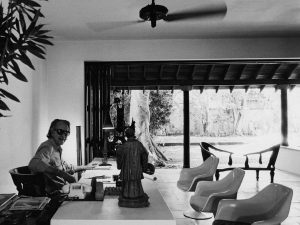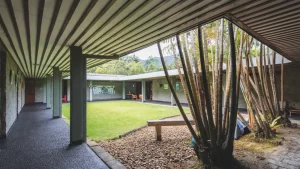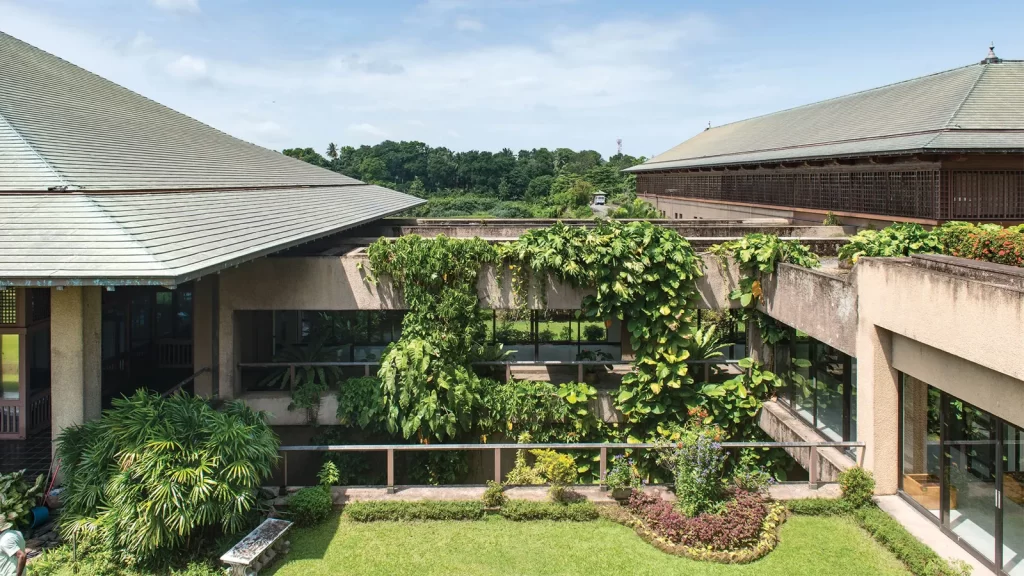Tsuktiben Jamir
When discussing art, architecture cannot remain in the shadows. One may build without art, but as soon as one wants to do more with it than just fulfil the bare minimal functional requirements, one must incorporate art with architecture. If your art is moving people emotionally with your works, then architecture is capable of doing the same.
And when Sri Lankan architecture is discussed, we cannot help but remember the great Geoffrey Bawa. He not only made a mark in the Sri Lankan architecture, but also influenced and inspired internationally. ‘Geoffrey Bawa: It is Essential to be There’ is an exhibition that was started to immortalise and commemorate this man’s exquisite and unique architectural visions. The Indian Express has confirmed that “with over 120 documents from the Bawa archives, the exhibition will showcase his unbuilt work and photographs from his travels.”
The National Gallery of Modern Art (NGMA), the Ministry of Culture, the High Commission of Sri Lanka, New Delhi, and the Geoffrey Bawa Trust, Colombo, are presenting Bawa’s archives for the first time here in India. The exhibition was inaugurated on 17th March, 2023 and is scheduled till the 7th of May. The event honours the cultural exchange programme between India and Sri Lanka while also commemorating the 75th anniversary of Indo-Lanka Diplomatic Relations.

Courtesy: Geoffrey Bawa Trust
The irresistible impact of one man serves as a reminder that occasionally, one person may have such a profound influence on a country’s cultural life that nothing can ever be the same in the aftermath. The late Geoffrey Bawa was born in 1919 in Colombo, Sri Lanka. The man who designed the Sri Lankan Parliament building expanded the realm of the achievable and introduced a number of fresh concepts to architecture. He rejected ornamentation, embraced minimalism, and drew inspiration from the environment around him; eventually, he became a pioneer of ‘Tropical Modernism’, an architectural style that conjured the minimalistic aesthetic while considering the nature and climate around the tropics; at the same time, staying modern.
Bawa’s greatest skill was his ability to define climate-appropriate solutions and structures with a strong feeling of place that were firmly based on local traditions. His design aesthetic included deep verandas, indoor courtyards, overhanging eaves and a minimal use of glass.
Geoffrey Bawa, a lawyer turned architect, didn’t begin his remarkable adventure until he was 38 years old when he decided to transform his recently acquired Lunuganga Estate into a tropical paradise that would reflect the Mediterranean mindset which he loved and with which he had great connection. However, he did not dive in blind into the field; he enrolled himself in the Architectural Association (A.A.) in London in 1954 to study architecture, and in 1957 he was qualified as an architect. He produced a number of significant projects throughout the years, including iconic hotels, mansions, and temples.

Courtesy: Architecture and Design
Geoffrey was a man with a vision who had the ability to bring that vision to life in the form of beautiful as well as practical designs which are loved and admired to this day.
17th March- 7th May, 2023
Timing: 11AM- 6:30 PM (Mondays closed)






